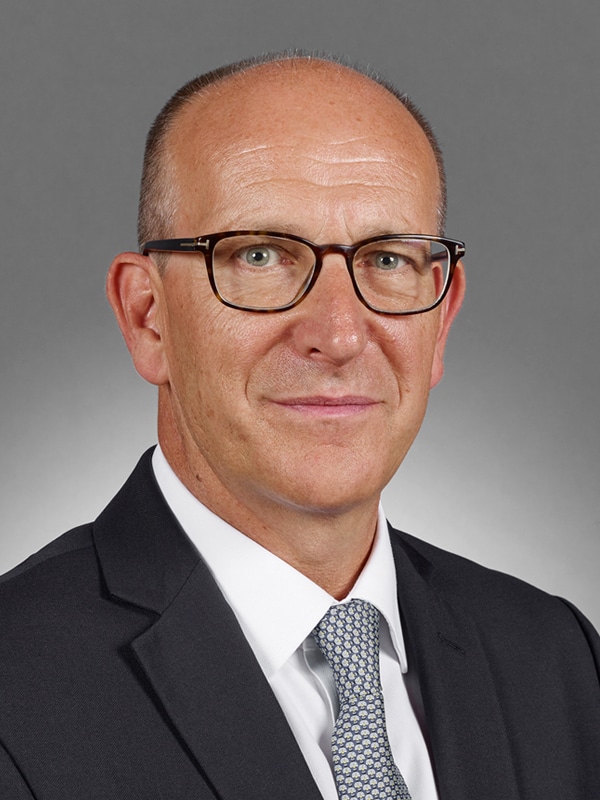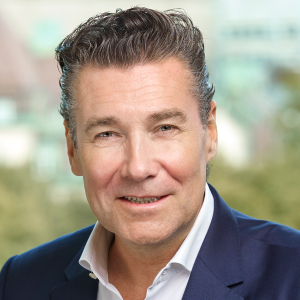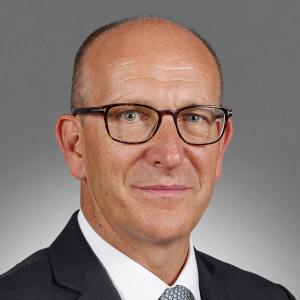- About usToggle Submenu
- Why HarbourVestToggle Submenu
- Investment strategiesToggle Submenu
- Custom solutionsToggle Submenu
- Direct co-investmentsToggle Submenu
- Infrastructure and real assetsToggle Submenu
- Primary investmentsToggle Submenu
- Private creditToggle Submenu
- Secondary investmentsToggle Submenu
- Open-ended private market solutionToggle Submenu
- HarbourVest Private Investments FundToggle Submenu
- RelationshipsToggle Submenu
- CareersToggle Submenu
October 2, 2023 | 6 min read
Private markets are undergoing a significant period of transition, opening their doors to non-institutional investors eager to access the opportunities offered by the asset class.
Over the past five years, the rise of evergreen, or perpetual, vehicles has presented an opportunity for private client investors to enter the private markets space, and benefit from exposure to an asset class previously only available to large, well-established, institutional investors.
Unlike traditional closed-ended PE funds, which typically have a fixed lifespan of about 10 years, evergreen products have no fixed end date, offer more flexibility, lower entry minimums, and provide immediate exposure with no ramp-up period.
But why has this change occurred, who is driving it, and what will this mean for investors and the market?
Simon Jennings, Managing Director and Head of HarbourVest’s Private Client Group in EMEA and APAC, and Per Olofsson, Head of Alternatives at Swedish government pension fund AP7, addressed these questions at a recent executive interview as they expanded on their decision to partner on a new private equity (PE) open-ended solution for both non-US high net worth (HNW) and institutional investors.
Jennings noted that recent market volatility and the closer correlation between fixed income and equity returns has fueled interest in the private markets among investors of all types. Countering that, however, are concerns about locking up capital.
“One of the biggest hurdles for investors in private markets is the perception of illiquidity,” Jennings said, “whether it is an institutional investor wanting to change or rebalance their PE allocation; or in the case of private clients, a change to personal circumstances that means a need to access capital or liquidity.”
The evergreen model, by contrast, allows for periodic investor redemptions, solving the liquidity issue in a way that is “transparent, relatively straight forward, and easy to run”, he added.
“Evergreen strategies address some of the limitations presented by closed-end funds, such as limited liquidity, high minimum commitment amounts, J curve with slower exposure build-up, and removes the administrative burden of managing capital calls and distributions.”
Private client appeal
Rising investor demand coupled with extensive efforts by many of the world’s biggest investment companies to tap HNW individuals is expected to drive rapid growth in individual investors’ participation within private markets.
Bain predicts that the private wealth segment of the alternatives market will grow 12% annually in the decade to 2032, rising to $13 trillion from $4 trillion as at 2022.
Jennings himself has spent much of his career, including when leading PE divisions at UBS and HSBC, connecting HNW individuals to this asset class. At HarbourVest expanding private clients’ participation beyond the current 10% of its roughly $110 billion of assets under management (AUM) is a strategic priority.

Simon Jennings
HarbourVest
He said the Evergreen model vastly improves ease of access to PE for wealthy individuals, with the current penetration rate of about 5% providing a “huge growth opportunity”. Traditionally this asset class was open only to family offices, though this later widened out to ultra HNW individuals, who would invest via feeder vehicles created by private banks, he explained.
Institutional interest
Institutional investors have long been investing in private markets and despite recent market volatility, continue to embrace the opportunity due to a spate of de-listings, the rise and rise of technology companies and the recent equities/bonds correlation make genuine diversification harder to achieve.
“Institutional investors are looking for innovative ways to augment their existing private markets allocation (post market turbulence and the denominator effect); and evergreen vehicles provide access to flexible asset allocation without the operational constraints of liquidity management of closed-end vehicles,” Jennings said.
AP7’s Olofsson said AP7 is planning to lift its allocation to private markets from about 5% of its roughly $100 billion AUM to 20% following a change in Swedish pension regulation from January this year.
Evergreen funds will be an increasing part of this mix, given the greater liquidity, operational ease and the ability to build more immediate exposure to PE that they offer.
“Our goal is to find innovative and responsible ways to put our savers’ capital to work in attractive opportunities,” he said.
“This solution allows us to quickly increase our alternatives allocation, and quickly increase our alternatives strategies such as secondaries and co-investments, which in turn will complement our more mature primary exposure.”
AP7’s evergreen collaboration with HarbourVest, which includes a $835 million anchor investment, is the first of its kind for the Swedish pension fund. The project is the fruit of two years’ work and more than 200 meetings, marking the evolution of a relationship with HarbourVest stretching back over 20 years. Olofsson described this as being based on “collaboration and trust”.
The partnership “allows us to reach our target allocation faster while maintaining diversification,” he added.
“We are constantly looking for ways to find value for our investors and wanted to partner with a like-minded organisation that understood those needs.”
Differentiating from rivals
The partnership leverages HarbourVest’s successful 40-year track record. This includes one of the largest and longest-standing investment teams in secondary and direct co-investments, and experience managing another evergreen strategy through the London-listed HarbourVest Global Private Equity.
While a growing number of players offer evergreen funds, Jennings stressed the differentiators of the HarbourVest/AP7 solution.
For one thing, the strategy is underpinned by a highly diversified seed portfolio from AP7, which removes the blind pool risk and the need for a ramp-up period. In addition, the distributions from the mature portfolio can be quickly re-deployed into new investments thus reducing the need to hold cash.

Per Olofsson
AP7
Unlike others, this is a pureplay private equity strategy providing investors with immediate access to HarbourVest’s robust deal flow, and its ability to deploy more than $10 billion a year across direct co-investments and secondaries. It is based on an open architecture and multi-manager approach, giving clients access to quality deals from leading PE managers.
The future
The investment case for evergreen funds is clear, while for PE firms themselves they allow for flexibility around investment holding periods, respite from the fundraising treadmill and facilitate the kind of patient capital preferred by shareholders.
In a rapidly changing private markets landscape, an increasing number of institutional and HNW investors are considering alternatives to the traditional closed-end fund, and evergreen products look set to gain considerable traction.
AP7’s Olofsson argued that the type of innovation and change driving the pension fund’s new partnership with HarbourVest is a “good way for institutional investors to rethink, reset and evolve”.
“Open-ended solutions also provide an opportunity for institutional investors to diversify and augment their existing and established private market portfolios,” he added.
Jennings said that the current market the backdrop gives private markets a unique opportunity to “showcase its potential” to new investors.
“Through open-ended solutions, there’s a great opportunity to reach the broader segment of the market,” he said. “The future is positive and open-ended solutions present a significant and exciting growth opportunity.”
Would you like to discuss Open-ended private market solutions?
AP7 is a client of HarbourVest and has invested in a number of HarbourVest products.
HarbourVest Partners, LLC is a registered investment adviser under the Investment Advisers Act of 1940. This material is solely for informational purposes and should not be viewed as a current or past recommendation or an offer to sell or the solicitation to buy securities or adopt any investment strategy. The opinions expressed herein represent the current, good faith views of the author(s) at the time of publication, are not definitive investment advice, and should not be relied upon as such. This material has been developed internally and/or obtained from sources believed to be reliable; however, HarbourVest does not guarantee the accuracy, adequacy or completeness of such information. There is no assurance that any events or projections will occur, and outcomes may be significantly different than the opinions shown here. This information, including any projections concerning financial market performance, is based on current market conditions, which will fluctuate and may be superseded by subsequent market events or for other reasons. The information contained herein must be kept strictly confidential and may not be reproduced or redistributed in any format without the express written approval of HarbourVest.
Nothing herein should be construed as a solicitation, offer, recommendation, representation of suitability, legal advice, tax advice, or endorsement of any security or investment and should not be relied upon by you in evaluating the merits of investing in HarbourVest funds or in any other investment decision.



